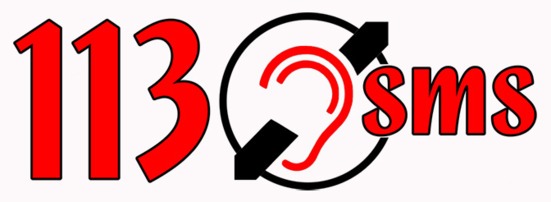Symbolic Reasoning Symbolic AI and Machine Learning Pathmind
Reconciling deep learning with symbolic artificial intelligence: representing objects and relations
His work has been recognized globally, with international experts rating it as world-class. He is a recipient of multiple prestigious awards, including those from the European Space Agency, the World Intellectual Property Organization, and the United Nations, to name a few. With a rich collection of peer-reviewed publications to his name, he is also an esteemed member of the Malta.AI task force, which was established by the Maltese government to propel Malta to the forefront of the global AI landscape. This progression of computations through the network is called forward propagation.
Making artificial intelligence more reliable MSUToday Michigan … – MSUToday
Making artificial intelligence more reliable MSUToday Michigan ….
Posted: Tue, 01 Aug 2023 07:00:00 GMT [source]
These smart assistants leverage Symbolic AI to structure sentences by placing nouns, verbs, and other linguistic properties in their correct place to ensure proper grammatical syntax and semantic execution. Nonetheless, a Symbolic AI program still works purely as described in our little example – and it is precisely why Symbolic AI dominated and revolutionized the computer science field during its time. Symbolic AI systems can execute human-defined logic at an extremely fast pace.
Neuro-symbolic approaches in artificial intelligence
We can do this because our minds take real-world objects and abstract concepts and decompose them into several rules and logic. These rules encapsulate knowledge of the target object, which we inherently learn. Neuro-symbolic AI offers the potential to create intelligent systems that possess both the reasoning capabilities of symbolic AI along with the learning capabilities of neural networks. This book provides an overview of AI and its inner mechanics, covering both symbolic and neural network approaches.
For example, a computer system with an average 1 GHz CPU can process around 200 million logical operations per second (assuming a CPU with a RISC-V instruction set). This processing power enabled Symbolic AI systems to take over manually exhaustive and mundane tasks quickly. A key factor in evolution of AI will be dependent on a common programming framework that allows simple integration of both deep learning and symbolic logic.
How taking inspiration from the brain can help us create Neural Networks.
It automates the process of setting up a new package directory structure and files. You can access the Package Initializer by using the symdev command in your terminal or PowerShell. We also include search engine access to retrieve information from the web. To use all of them, you will need to install also the following dependencies or assign the API keys to the respective engines. Building applications with LLMs at the core using our Symbolic API facilitates the integration of classical and differentiable programming in Python.
- As
we have discussed in the previous section, graph-like structures are widely used in AI
for representing knowledge.
- You’ll begin by exploring the decline of symbolic AI and the recent neural network revolution, as well as their limitations.
- Symbolic AI algorithms are based on the manipulation of symbols and their relationships to each other.
- “We all agree that deep learning in its current form has many limitations including the need for large datasets.
Due to its AI allowed the developers to trace back the result to ensure that the inferencing model was not influenced by sex, race, or other discriminatory properties. Although Symbolic AI paradigms can learn new logical rules independently, providing an input knowledge base that comprehensively represents the problem is essential and challenging. The symbolic representations required for reasoning must be predefined and manually fed to the system. With such levels of abstraction in our physical world, some knowledge is bound to be left out of the knowledge base.
Symbolic artificial intelligence
The post_processors argument accepts a list of PostProcessor objects for post-processing output before returning it to the user. Lastly, the wrp_kwargs argument passes additional arguments to the wrapped method, which are streamlined towards the neural computation engine and other engines. Basic operations in Symbol are implemented by defining local functions and decorating them with corresponding operation decorators from the symai/core.py file, a collection of predefined operation decorators that can be applied rapidly to any function. Using local functions instead of decorating main methods directly avoids unnecessary communication with the neural engine and allows for default behavior implementation. It also helps cast operation return types to symbols or derived classes, using the self.sym_return_type(…) method for contextualized behavior based on the determined return type.
The Symbolic AI paradigm led to seminal ideas in search, symbolic programming languages, agents, multi-agent systems, the semantic web, and the strengths and limitations of formal knowledge and reasoning systems. We investigate an unconventional direction of research that aims at converting neural networks, a class of distributed, connectionist, sub-symbolic models into a symbolic level with the ultimate goal of achieving AI interpretability and safety. To that end, we propose Object-Oriented Deep Learning, a novel computational paradigm of deep learning that adopts interpretable “objects/symbols” as a basic representational atom instead of N-dimensional tensors (as in traditional “feature-oriented” deep learning). It achieves a form of “symbolic disentanglement”, offering one solution to the important problem of disentangled representations and invariance. Basic computations of the network include predicting high-level objects and their properties from low-level objects and binding/aggregating relevant objects together. These computations operate at a more fundamental level than convolutions, capturing convolution as a special case while being significantly more general than it.
They can also be used to describe other symbols (a cat with fluffy ears, a red carpet, etc.). When deep learning reemerged in 2012, it was with a kind of take-no-prisoners attitude that has characterized most of the last decade. By 2015, his hostility toward all things symbols had fully crystallized. He gave a talk at an AI workshop at Stanford comparing symbols to aether, one of science’s greatest mistakes. Critiques from outside of the field were primarily from philosophers, on intellectual grounds, but also from funding agencies, especially during the two AI winters.
Read more about https://www.metadialog.com/ here.
What is symbolic form in AI?
In symbolic AI, knowledge is represented through symbols, such as words or images, and rules that dictate how those symbols can be manipulated. These rules can be expressed in formal languages like logic, enabling the system to perform reasoning tasks by following explicit procedures.







